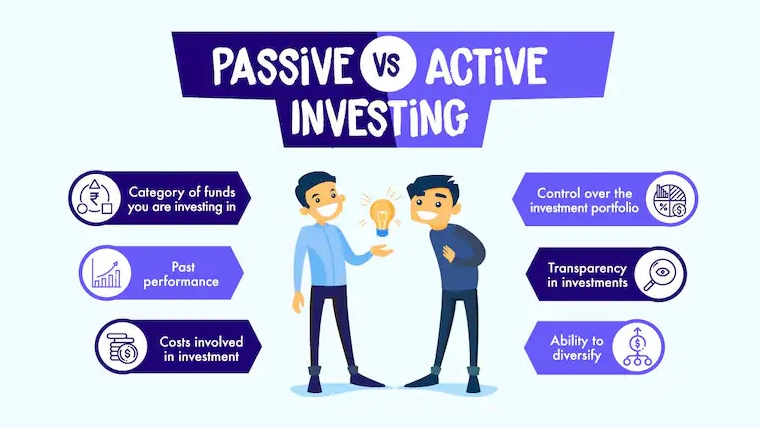
There is no use trying to pick specific stocks or bonds because the market will win on average, say passive investing advocates. The fundamental belief underlying passive investing is that, on average, investors cannot outperform the market on a risk-adjusted basis. This stems from the efficient market hypothesis which states that asset prices reflect all available information.
The first passively indexed portfolio was launched in 1971 by Wells Fargo for a pension fund. The first index fund available to retail investors was launched in 1975 by Vanguard. Passive vehicles now abound and are easily accessible through various investing platforms. Not all passive strategies are created equally however, and investors need to be cognisant of how any differences may affect investment outcomes. In practice, the average passive investor may indeed be making active investment decisions.
This is not supposed to be an argument on active versus passive but rather to help illuminate the make-up of various types of passive investment products available in the market today. If you really want to know which investment strategy is best, the answer may or may not be hidden in each of the following paragraphs.
There are several ways an index can be constructed which will affect the shape of an investment portfolio. Investors should consider the following when assessing what passive strategy is appropriate:
(1) the universe/boundaries of the strategy,
(2) any specific criteria e.g. ESG exclusions,
(3) weighting methodology e.g. price, market float, or equal,
(4) calculation methodology e.g. price or total (includes both capital appreciation and dividends).
With the proliferation of low-cost index funds now available to investors, at what point does the decision to invest passively actually become ‘active’? Many investors are making active selections by investing in specific regions, sub-sectors, factors/smart beta, or thematics, rather than simply investing in a broad market tracking index.
For example, an investor may choose to invest in a passive index fund made up of equities tracking the S&P 500 index. But why not invest in one tracking the NZX 50 index or MSCI ACWI (a common global equity index)? The active decision in this situation is to choose the equity of US companies over NZ companies or a broader global equity index. The indices have different underlying drivers of risk and return.
To give another example, an investor may be attracted to a certain thematic. An example of this might be a passive fund with specific ESG (environmental, social, governance) criteria. Suppose an investor wants exposure to US companies with sustainability criteria, the active decision is to move away from the standard S&P 500 Index and instead choose a fund that tracks the S&P 500 ESG Index. The exposure to underlying stocks differs between these indices. For instance, Berkshire Hathaway and Meta feature in the top ten weightings for the standard S&P 500 Index but not in the ESG version. Instead, the ESG version of the index rounds out the top ten weightings with JP Morgan Chase & Co and Visa Inc A. This is simply the passive implementation of active risk. The indices have different underlying drivers of risk and return.
The two examples above demonstrate active decisions within the context of equities. However, the more pertinent consideration for investors is the broader asset allocation decision within the overall investment portfolio. Simply put, what to invest in equity versus fixed interest versus cash. Asset allocation is the main driver of returns over time so this is where much focus should be paid to ensure an investor’s portfolio is commensurate with their risk tolerance.
Before investors even assess what to invest in, the question for investors should ultimately be, what do I want to achieve by investing? Once this is understood then the most appropriate combination of investments can be chosen to help meet the investor’s objectives.
Research IP believes there is merit to investing in both active and passively managed investments. The actual combination is a significant active decision in itself. The level of involvement and decision making can vary for different parts of the investment portfolio. Ongoing governance and portfolio reviews are important to make sure the drivers of risk and return within the portfolio are appropriate for investors’ objectives.
Andy Mahony is an investment consultant at Research IP. You can contact him here. As a resource for investors, the RIPPL Effect reports for over 200 funds are available here.
2 Comments
Great article. This site needs more of this type rather than the myopic and constant rehashing of housing and the OCR. Be nice to see some guest commentaries tackling Qs such as investing in the era of high inflation, should a kiwi hedge for currency fluctuations in offshore investments, tax implications for offshore investments, does the FTSE include dividends vs S&P? Fill ya boots editorial staff
Yes, a nice article. And this is an excellent comment.

We welcome your comments below. If you are not already registered, please register to comment.
Remember we welcome robust, respectful and insightful debate. We don't welcome abusive or defamatory comments and will de-register those repeatedly making such comments. Our current comment policy is here.